If you’re looking for an efficient way to water your vegetable garden, you should definitely consider using a soaker hose. Soaker hoses are a great choice for watering vegetables because they deliver water directly to the roots of plants, which helps minimize waste and conserve water. In this article, we will answer some common questions about using soaker hoses in the garden, and we’ll provide some tips on how to get the most out of them. Let’s get started!
What is a soaker hose?
A soaker hose is a special type of garden hose that uses small holes along its length to slowly and steadily release water. The top layer of the hose contains small, porous material that allows water to slowly seep out through the tiny holes (called emitters). This slow and steady release of water helps ensure that the soil is evenly moistened without over-saturating it. [3]
How Do I Set Up a Soaker Hose System?
A soaker hose system is a great way to provide your vegetables with the right amount of water. To set up a soaker hose system in your vegetable garden, you’ll need:
- A length of soaker hose long enough to cover the whole garden area;
- A source of water (e.g. a faucet or tap);
- A shutoff valve that can be turned off and on from the main water supply;
- Optional: Connectors for attaching multiple hoses together if needed [1];

How to use a soaker hose in your vegetable garden?
Choose the right soaker hose for your garden
Choosing the right soaker hose for your vegetable garden is essential. The best type of soaker hose for a vegetable garden is one that is made from recycled plastic or rubber. This type of soaker hose will be more durable, last longer, and better resist punctures from stones or other sharp objects in the soil. It’s also important to choose a soaker hose with an appropriate inner diameter (ID) size–the larger the ID, the more water it can handle at once. [3]
Gather the things you’ll need
You may also need rubber gloves if you’re dealing with sharp objects or are worried about coming in contact with pesticides. [3]
Set the time and water flow
Once you’ve got your soaker hose in place, set the timer. Depending on the type of system you’re using, this could involve setting a mechanical timer (or programmable timer) or activating a controller that automatically turns water on and off based on soil moisture levels. It’s important to adjust your watering time and rate of flow so that you don’t overwater your plants. [3]
Use gardening apps to help
Using a smartphone or tablet app can help you keep track of your garden’s needs. There are many gardening apps that offer detailed planting advice, reminders for when it’s time to water and fertilize, and even give recommendations on the best time to plant certain vegetables. [3]
Check the soaker hose regularly
Finally, it’s important to check your soaker hoses regularly for any signs of damage or leaks. If you notice any cracks or punctures in the hose, replace it immediately. Additionally, be sure to check that the connections are secure and that there is no water leaking from them. [3]
Linking the hoses together
If you’re linking multiple soaker hoses together, be sure to secure the connection with a connector or clamp for maximum efficiency and water flow. Additionally, if you’re using more than one soaker hose in your garden, make sure they don’t overlap or run too close together–this can cause uneven watering and prevent the hose from working properly. [3]
Know the key to even distribution
Build the pressure up slowly
When using your soaker hose, it’s important to slowly build up the pressure. This will help prevent sudden spikes in water pressure which can damage the hose or cause leaks. Start with a low setting and increase the pressure gradually over time until you reach the desired output. [3]
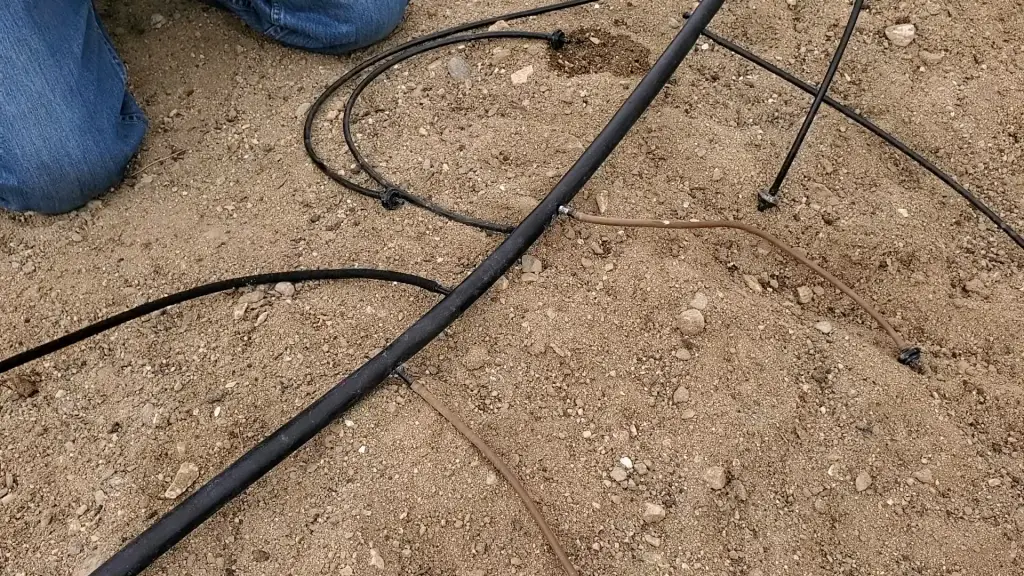
Be cautious of freezing temperatures
It’s important to be mindful of freezing temperatures when using a soaker hose in the winter. If the temperature drops below 32 degrees Fahrenheit, turn off the water and disconnect the hose from any outdoor spigots or faucets. This will help prevent frozen pipes which can cause costly damage. [3]
Soaker Hose Watering in Inches
Your vegetable garden needs a certain amount of water each week for optimal growth. The best way to gauge this is by counting the inches of water per week, which you can measure with your soaker hose.
If possible, use a rain gauge or some other device to measure how much rainfall has occurred in your area each week. Subtract this amount from the total number of inches your garden needs. The difference is how much water you’ll need to add to the soaker hose. [1]
The Depth of Moisture Method of Soaker Hose Irrigation
Using a soaker hose is an effective way to irrigate your vegetable garden.
The water will seep up through the soil, soaking the roots of your plants and helping to prevent evaporation. [1]
Benefits of Drip Irrigation
Save water
Drip irrigation is a form of watering that delivers water directly to the roots of your plants. It’s an efficient and effective way to keep your garden watered without wasting any excess water or soaking more than necessary. Not only does it save you time, but it also saves you money on your water bill! [2]
Keep moisture off the foliage
Using a soaker hose keeps excess moisture off of the leaves and stems of your plants. This helps prevent disease, fungus, and rot from occurring because there isn’t as much chance for spores to take hold on wet foliage. Not only does it keep your plants healthy, but it also looks better by eliminating puddles of water around plants. [2]
Outsmart weeds
Using a soaker hose can help you keep weeds at bay. Keeping moisture away from the surface of the soil, makes it much harder for weed seeds to sprout and take hold in your garden. Soaker hoses also help to discourage bigger, tougher weeds by preventing them from accessing the water they need to grow and thrive. [2]
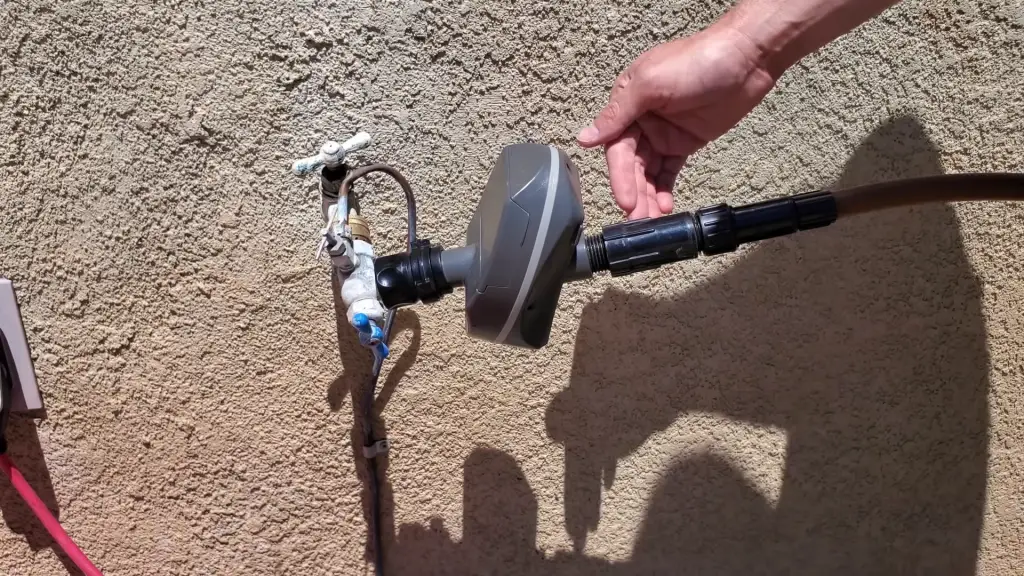
Save time
Using a soaker hose can help you save time by eliminating the need to hand water your garden. The slow, steady drip of the hose allows you to set it once and forget about it until it’s time to move the hose to another area. Plus, you won’t have to keep checking for dry spots or refilling containers of water! [2]
Better watering
Soaker hoses are great for giving your plants the right amount of water they need to thrive. The slow, steady drip allows water to reach and penetrate the roots much more effectively than traditional methods like sprinklers and watering cans. This helps prevent over- or under-watering, as well as any runoff that can be harmful to your garden.
No matter what kind of garden you have, a soaker hose is a great way to keep your plants healthy and hydrated. With the right planning and setup, you can enjoy all the benefits of a drip-irrigation system without breaking the bank! [2]
Adding Irrigation to Your Garden Plans
Gardening can be a challenging but rewarding hobby. If you want to make the most of your garden, one of the best ways is to add irrigation. A soaker hose can provide your garden with consistent and controlled water delivery, allowing plants to thrive in any weather condition. Here’s everything you need to know about using a soaker hose in your vegetable garden. [2]
Ideas for creative ways to use a soaker hose in your garden
Watering potted plants
A soaker hose is perfect for providing a gentle, even water flow to potted plants. Simply lay the hose around the outside of the pot and turn on the water. The soil will absorb all the moisture it needs without wasting any water. [3]
Creating a drip irrigation system
If you have a large garden and want to save time watering it, a soaker hose can be used to create an efficient drip irrigation system. Lay the hose along the rows of your garden plants and attach it to a timer or automatic water supply. This will allow you to water your entire garden with minimal effort. [3]
Watering hanging baskets
You can also use a soaker hose to water hanging baskets. Just drape the hose over the basket and turn on the water. This will ensure that your hanging plants get enough moisture without having to constantly check them. [3]
Watering trees
Soaker hoses are great for larger plants as well. Just lay the hose at the base of a tree or shrub and turn on the water. Be sure to move it around every few minutes to ensure that all areas of the plant get an even amount of moisture.
Using a soaker hose is one of the most efficient and convenient ways to water your garden. With a few simple steps, you can create an effective watering system that will keep your plants healthy and thriving. [3]
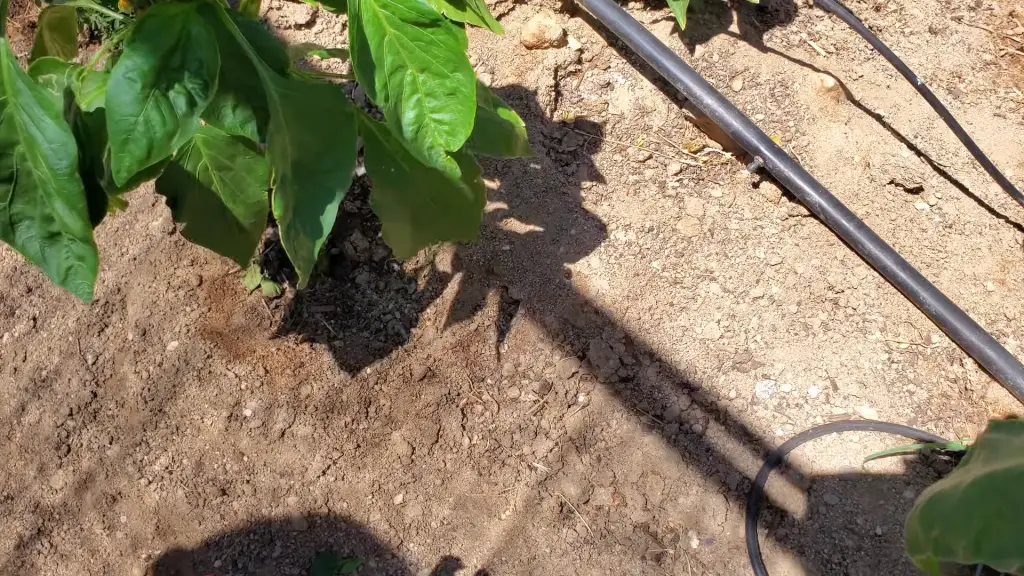
Watering shrubs
Shrubs can also benefit from the use of a soaker hose. All you need to do is run the hose around the perimeter of your shrub and turn on the water. This will ensure that each branch gets enough moisture without wasting any water. The gentle, even flow of water is perfect for keeping your plants healthy and hydrated. [3]
FAQ
How Do I Run My Soaker Hoses Through the Garden?
When you’ve finished laying out your soaker hoses, the next step is to run them through the garden. You want to make sure that each hose covers the desired area of your garden and that it will cover an even distribution of plants or rows. Each section in which a soaker hose runs can be labeled with a marker of some kind for ease of identification and future reference.
Do I Need Special Equipment to Use Soaker Hoses in My Garden?
No, you don’t need any special equipment to use a soaker hose in your garden. All you need is the hose itself and a water source. The only other optional items you may want to purchase are a timer for controlling when the hose will turn on and off, and a pressure reducer if your area has really high water pressure.
How Long Do I Run My Soaker Hose?
This depends on the type of plants you have in your garden and how much water they need. Generally, it is best to run a soaker hose for about an hour once every three days during the growing season. You may want to adjust this schedule depending on the weather conditions and the specific needs of your plants.
Are soaker hoses good for raised beds?
Yes, soaker hoses can be a great choice for raised garden beds. The low pressure of the hose allows water to be delivered deeply and evenly throughout the bed, which helps to keep your plant’s roots healthy and hydrated. Also, the flexibility of soaker hoses makes them easy to maneuver around obstacles in raised beds.
Can you run a soaker hose overnight?
Yes, you can run a soaker hose overnight. However, it’s important to be mindful of the water pressure in your area, as high-pressure water may cause the hose to burst or leak. It is also important to check that the timer controlling your soaker hose is set correctly and will turn off when needed. Finally, be sure to check the soil moisture levels in your garden, as running a soaker hose for too long can lead to overwatering and problems with root rot.
Which is better: flat or round soaker hose?
The type of soaker hose you should choose depends on your individual needs and the layout of your garden. Flat soaker hoses are best for shorter runs and narrower beds, as they can be easily steered around corners and pots. Round soaker hoses are more efficient at covering large areas with even water distribution, making them better suited for long runs and large beds. Ultimately, it is up to you to decide which type of hose is best for your garden.
What’s the difference between a weeper hose and a soaker hose?
A weeper hose is similar to a soaker hose in that it also slowly releases water through its tiny pores, but the difference is in the construction. Weeper hoses have more holes and are made from a thicker material, making them better suited for areas with rocky or uneven terrain. Soaker hoses are usually thinner and have fewer holes, making them better for flat or gently sloping beds. Both types of the hose can be used to efficiently water your plants.
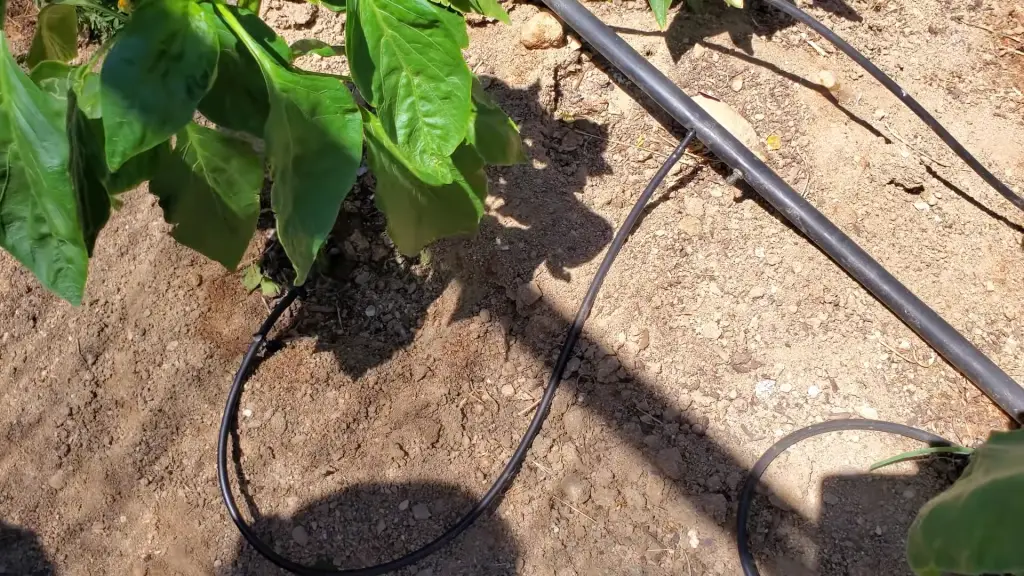
How long does it take a soaker hose to water an inch?
This will depend on the type of soil and plants in your garden, as well as the size of the soaker hose. Generally, it takes about an hour for a 50-foot soaker hose to release one inch of water into the soil. However, this can take longer or shorter depending on how porous your soil is and how much water your plants need. It’s always a good idea to check your soil moisture levels with a hand trowel to make sure your plants are getting enough water.
How deep should soaker hoses be?
Soaker hoses should be placed about 4 inches below the surface of your soil. This ensures that the water is delivered directly to the roots of your plants, rather than being lost to evaporation or runoff. Be sure to spread any mulch around the hose so that it is completely covered and protected from sunlight and other elements.
Useful Video: How to Install Soaker Hoses on Drip Irrigation in Vegetable Garden
Conclusion
With all of the benefits that a soaker hose can provide, it’s easy to see why so many people are using them in their vegetable gardens. Not only does it save time and energy, but it also helps conserve water and promote healthier plants. Keep in mind that soaker hoses should be used consistently so that your plants have enough moisture to stay healthy. And don’t forget to check your hose regularly for leaks or clogs, as well as general wear and tear. With the right maintenance, you’ll be able to enjoy a successful vegetable garden season after season. Happy gardening!
References:
- https://swanhose.com/blogs/soaker-hoses/how-to-use-soaker-hoses-in-a-vegetable-garden
- https://www.growveg.com.au/guides/how-to-install-soaker-hoses-in-your-vegetable-garden/
- https://humboldtssecretsupplies.com/blogs/articles/how-to-use-a-soaker-hose-in-your-vegetable-garden





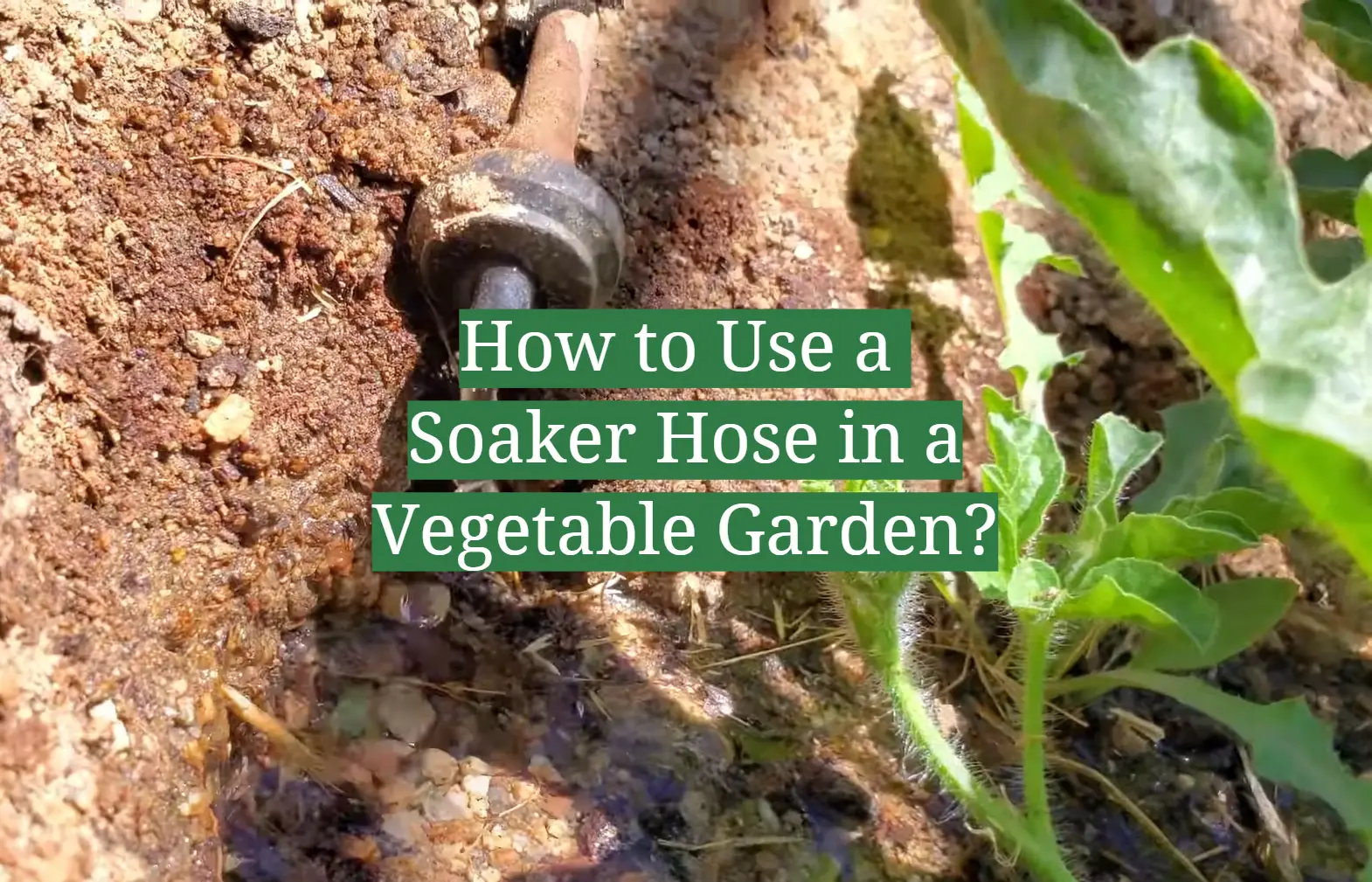
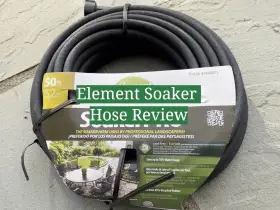
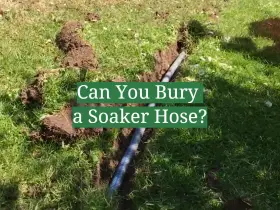
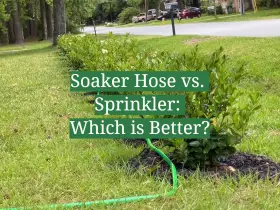
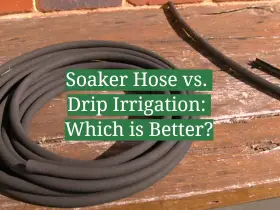
Leave a Reply
View Comments